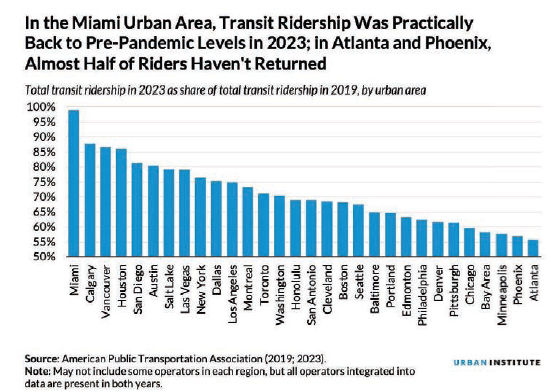Downtown Atlanta President Calls on MARTA to Halt Construction
June 11, 2024
A.J. Robinson, President of Central Atlanta Progress (CAP) & Atlanta Downtown Improvement District (ADID) Admonishes MARTA to Keep Five Points Open and Reconsider Flawed Design
Mayor Dickens rightly asked MARTA to pause its planned renovation and 4-year closure of Five Points MARTA Station. CAP/ADID applaud the mayor’s call to take a step back from the current project and existing plans for the Five Points Station “transformation”, which MARTA has spent millions producing, plans that are deeply flawed. Unfortunately, despite this direction from the City of Atlanta’s chief elected official, MARTA is refusing to pause the station closure.
“I take this decision to ignore the mayor’s request as unresponsive to taxpayers. MARTA’s refusal to hold off on closing Five Points for four years underscores MARTA’s lack of accountability to taxpayers and riders,” said A.J. Robinson, president of CAP and ADID.
For $230 million, MARTA’s plans would reproduce the existing condition: the concrete canopy would be replaced by a transparent top, the on-street bus bays that currently ring the station would be retained, and the unprogrammed plaza space would return. The current plan would invite the same issues facing the station today.
While riders would not see any substantive improvements to the station when the “transformation” was complete, they would certainly feel the impact of the construction: MARTA’s plan to close Five Points Station, the busiest rail station in the system, for most of the next four years will cut off access for thousands of riders. MARTA plans to reopen Five Points during the 2026 World Cup, which begs the question: why would MARTA open pedestrian access for the world but not for Atlantans? The toll on the 17,000 working parents, residents, commuters, and students who access the station by bus or foot would be incalculable. Even worse, this closure would add significant additional travel time for people with disabilities and families with strollers transferring between lines.
The current design, which would not be complete in time for the 2026 World Cup, is not the right course of action. However, investing in Five Points and the surrounding Downtown stations remains imperative. Since 2016, MARTA’s ridership has been decimated—it ranks last among cities for post-pandemic ridership return.

Downtown’s rebirth offers an opportunity for MARTA to rebuild. Two Peachtree, Underground Atlanta, South Downtown, and Centennial Yards all converge at Five Points. Beyond those developments, Downtown’s density, job access, and transit-rich environment are critical to meeting the mayor’s affordable housing goals. And the region’s first bus rapid transit (BRT), connecting Summerhill and Downtown, will terminate on Broad Street SW between Five Points and Garnett. The future growth of our transit system is dependent upon the success of this BRT, MARTA’s de facto mode of choice, so the transfer between the modes should be pleasant and seamless. Downtown is deserving of world-class transit stations, and significant investment is needed to make them clean, safe, and inviting.
When MARTA and the City of Atlanta revisit the More MARTA list after the audit is finalized, they should:
- Invest in a Five Points Station “refresh” above the fare gates before 2026. A refresh could include artistic lighting, murals, landscaping, safe pedestrian crossings on adjacent streets, and active programming in the existing public spaces.
- Refresh other Downtown stations before 2026. Specifically, Garnett, DOME/CNN Center/Philips/GWCC, and Vine City all need an investment in new signage, station refresh and continued maintenance.
- Reconsider the station transformation plan altogether. A modified plan should include the voices of riders, the Downtown community, and other key stakeholders including the disability community. The Five Points Transformation should create a more approachable station and better rider experience while delivering an exceptional public realm. This doesn’t mean banishing the buses; it means getting creative to move them off-street and prioritizing the pedestrian-first environment that defines great downtowns and resembles what has been done in other cities. MARTA could prioritize the station’s urban design and look to parcels below the viaduct or land on the interior of the station (as seen throughout the MARTA system, including at North Avenue Station) to locate the buses.
- Once a new plan is developed, construction should be delayed until after the 2026 World Cup. While the station is under construction, appropriate station access should be maintained. During the construction of station improvements to the 42nd Street Connection in New York City, MTA maintained station access. Chicago similarly maintained access during the reconstruction of the Wilson Street Station.
With $1 billion in planned real estate projects steps from Five Points, MARTA could attract the new riders the system desperately needs. The City’s front door - a symbol of access and opportunity – should be welcoming and attractive for today’s riders and the next generation of users. To fuel the return to ridership, Five Points and the surrounding Downtown stations should be prioritized when examining the More MARTA list.
Central Atlanta Progress (CAP) is a nonprofit corporation of Atlanta business leaders, property owners, and institutions working with each other and with the government since 1941 to help build a thriving center city. It carries out research and planning and serves as a catalyst for a wide range of programs and projects for the betterment of Downtown Atlanta.
Atlanta Downtown Improvement District (ADID) was founded in 1995 by Central Atlanta Progress (CAP) and is a public-private partnership and nonprofit charitable organization that strives to create a livable environment for Downtown Atlanta. With a board of directors of nine private and public sector leaders, ADID is funded through a community improvement district.